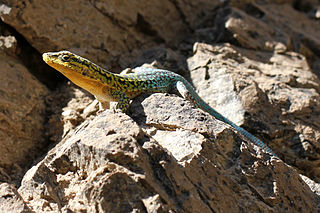
Liolaemus is a genus of iguanian lizards, containing many species, all of which are endemic to South America.
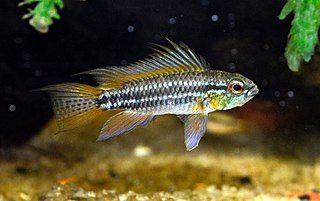
Apistogramma is a large genus of freshwater fish in the family Cichlidae native to South America, but also commonly kept in aquariums. They are dwarf cichlids that mostly feed on tiny animals and have breeding behaviors that vary depending on the exact species.
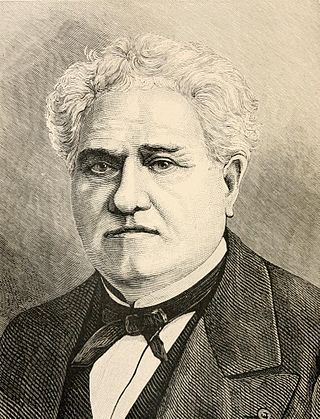
Paul Gervais full name François Louis Paul Gervais was a French palaeontologist and entomologist.

Eleutherodactylus is a genus of frogs in the family Eleutherodactylidae. Many of the 200 species of the genus are commonly known as "rain frogs" or "robber frogs", due to their sharp, high-pitched, insect-like calls.
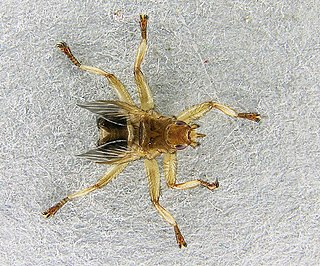
Hippoboscidae, the louse flies or keds, are obligate parasites of mammals and birds. In this family, the winged species can fly at least reasonably well, though others with vestigial or no wings are flightless and highly apomorphic. As usual in their superfamily Hippoboscoidea, most of the larval development takes place within the mother's body, and pupation occurs almost immediately.

Talpa is a genus in the mole family Talpidae. Among the first taxa in science, Carolus Linnaeus used the Latin word for "mole", talpa, in his Regnum Animale to refer to the commonly known European form of mole. The group has since been expanded to include 13 extant species, found primarily in Europe and western Asia. The European mole, found throughout most of Europe, is a member of this genus, as are several species restricted to small ranges. One species, Père David's mole, is data deficient. These moles eat earthworms, insects, and other invertebrates found in the soil.

Lirainosaurus is a genus of titanosaur sauropod which lived in what is now Spain. The type species, Lirainosaurus astibiae, was described by Sanz, Powell, Le Loeuff, Martinez, and Pereda-Suberbiola in 1999. It was a relatively small sauropod, measuring 4 metres (13 ft) long, possibly up to 6 metres (20 ft) long for the largest individuals, and weighed about 2–4 metric tons.
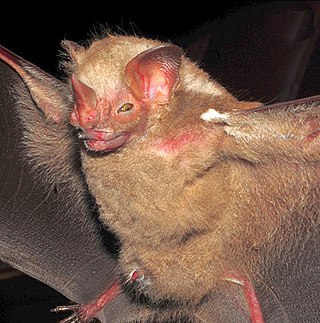
The Ipanema bat is a bat species of order Chiroptera and family Phyllostomidae. It is found in northern Argentina, Bolivia, southeastern Brazil and Paraguay. It is the only species within its genus.

Helicoidea is a taxonomic superfamily of air-breathing land snails, terrestrial pulmonate gastropod mollusks in the clade Stylommatophora.

Glossophaga is a genus of bats in the leaf-nosed bat family, Phyllostomidae. Members of the genus are native to the American Neotropics.

Macrogryphosaurus is a genus of elasmarian dinosaur from the Coniacian age Upper Cretaceous Sierra Barrosa Formation of Argentina in Patagonia. It was described by Jorge Calvo and colleagues in 2007, with M. gondwanicus as the type and only species.

Spain competed at the 2005 Mediterranean Games in Almería, Spain. The home nation had a total number of 463 participants.
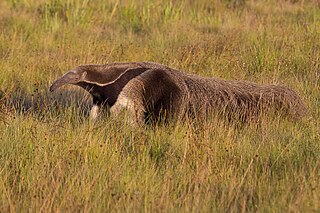
Anteaters are the four extant mammal species in the suborder Vermilingua, commonly known for eating ants and termites. The individual species have other names in English and other languages. Together with sloths, they are within the order Pilosa. The name "anteater" is also commonly applied to the unrelated aardvark, numbat, echidnas, and pangolins, although they are not closely related to them.

Hydrochus is the only living genus of beetle in the family Hydrochidae, which belongs to the superfamily Hydrophiloidea, and was formerly treated as a subfamily of Hydrophilidae. Hydrochus includes about 180 species, which are found worldwide. The name "Hydrochus" has also been used for a fly genus in the family Dolichopodidae, but this is a junior subjective synonym of the genus Rhaphium.

Asperdaphne is a genus of sea snails, marine gastropod mollusks in the family Raphitomidae.

Antalis is a genus of tusk shells, marine scaphopod mollusks.

Archaeohyrax is a genus of extinct notoungulate mammal known from the Middle Eocene to Oligocene of Argentina and Bolivia.
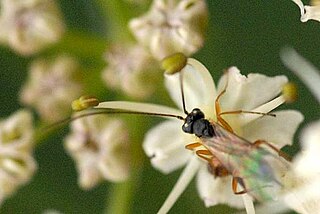
Clistopyga is a genus of ichneumon wasps in the family Ichneumonidae. There are at least 30 described species in Clistopyga.
Prionospio is a genus of annelids belonging to the family Spionidae.

Bonaparteichnium is a dinosaur ichnogenus known from the Candeleros Formation of Neuquén Province, Argentina. It was named by Jorge O. Calvo in a 1991 paper, alongside the other ornithopod ichnogenera Sousaichnium and Limayichnus. The name of the genus honours Argentinian palaeontology José Bonaparte for his contributions to palaeontology in Argentina. The taxon was named for a 60cm footprint of a bipedal ornithopod; the heel of the track is 28cm long, making it 45% of the track. This length, above that expect for an ornithopod foot, along with the width and robustness of the heel, was the distinguishing trait cited in naming the specimen as a new ichnospecies, and is the basis of the species name tali, referring to word "talon" which means heel. In a 1999 paper Calvo would revise his opinion and consider his three ichnogenera to be synonyms. He noted the extreme similarity of the front half of the foot between Bonaparteichnium and Limayichnus, and that the length and size of a heel in a track is dependent on the method of walking; a bipedal animal walking abnormally low to the ground would produce a track such as that used to name Bonaparteichnium even in lack of a large heel as a genuine anatomical feature. He referred to B. tali as a nomen vanum. In a literature review of hadrosaur ichnotaxa, Ignacio Díaz-Martínez and colleagues considered it a nomen dubium as opposed to referring the specimen to Limayichnus, as they also considered that taxon dubious. They noted that Bonaparteichnium can also be considered a taphotaxon, a term proposed by Spencer G. Lucas to refer to invalid taxa who were thought distinct due to taphonomic distortions.


















